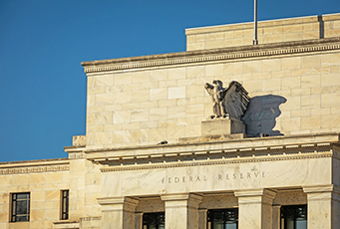
The U.S. Federal Reserve has been raising interest rates. Some say too fast, others say not fast enough. Rising interest rates will impact credit card, mortgage, and student loan rates as well investment returns. What does this mean for your finances?
The Federal Reserve and Interest Rates
The Federal Reserve (the Fed) controls interest rates by raising and lowering the federal funds rate. This is the rate banks charge each other to lend funds overnight to ensure they meet the Fed’s liquidity requirement. Banks base all short-term interest rates, including those for your checking and savings accounts, on this rate.
During the Recession of 2008, the Fed lowered interest rates to 0.25 percent. While this may have been positive if you were looking to lock in a mortgage rate, you were essentially getting next to nothing on the cash sitting in your financial accounts. Interest rates remained at this level until the Fed felt growth had stabilized enough for it to initiate an increase in December 2015. Between 2015 and the most recent increase in September 2018, the Fed has raised interest rates eight times with rates increasing from the 0.25 percent range to 2.25 percent range.
So what does this mean for you and your money? It’s not all negative. One positive result is that banks and other savings institutions have increased the interest rates they pay you on the cash deposited in your accounts. Do you know the yield you’re getting? If not, you could be cheating yourself!
Interest Rates and Your Financial Accounts
The interest rate you are getting on cash will depend on who the custodian is, the type of account, and how much cash you have in that account. Because every custodian is different, it’s important to do your research and shop around. Examine your bank, credit union, and/or brokerage firm to determine whether your yield is competitive.
Traditionally, you’ll receive higher interest on cash in your checking and savings accounts from a credit union compared to a brick-and-mortar bank. Similarly, an online bank will typically have higher interest rates than a brick-and-mortar bank, because of the online bank’s lower operating costs.
According to bankrate.com, the standard checking account at a brick-and-mortar bank pays an average of 0.07 percent annual percentage yield (APY), while many online banks and credit unions will have yields around 2.00 percent. What does this mean to you?
Example: Let’s say Paul has $20,000 in an account yielding 0.07 percent and $20,000 in an account yielding 2.00 percent, both being held for one year. The $20,000 yielding 0.07 percent will provide him with about $14 in interest payments that year, while the $20,000 yielding 2.00 percent will provide him with $400. Keep in mind these are before tax dollars.
Be sure to pay attention to the minimums as well, because some institutions will provide a higher return for larger sums of cash. Adding a couple hundred bucks to your account could mean the difference in receiving a higher yield.
Money market funds can be similar in yield to the checking and savings accounts of online banks or credit unions. These also vary in interest depending on the custodian. Money market funds can be taxable or non-taxable. If you are in a higher tax bracket or are more sensitive to income, then a non-taxable money market fund may be a more attractive way to receive tax-free interest on your investment.
Summary
Interest rates have been so low for so long that many people are still used to getting next to zero return on their cash holdings. In this rising-rate environment, that’s changing fast. Do your research! Contact your financial institutions to make sure you’re getting the most yield out of your cash!
Schedule a Consultation
We have helped our clients answer these questions and more. If you want a clear understanding of your financial future, and need help making changes to reach your goals, schedule a consultation and we can get started.
Recommended Articles
Private Equity and M&A in a Low-Rate World
Deal flow is the stream of business proposals, investment...





